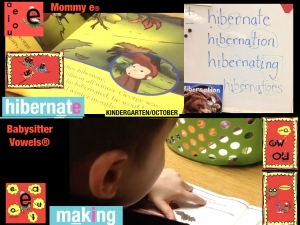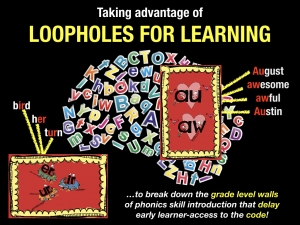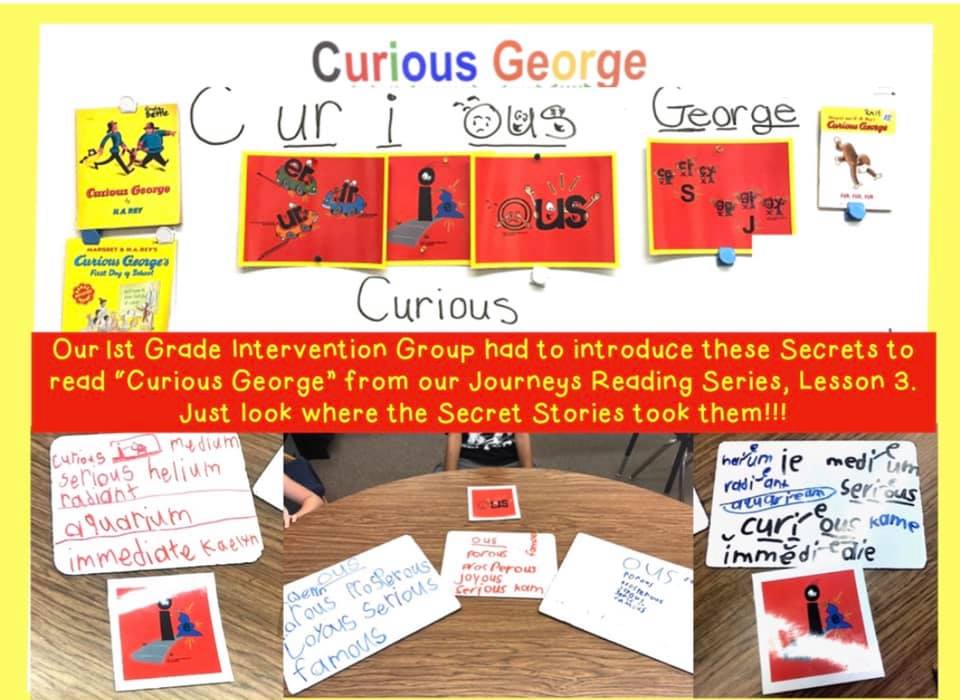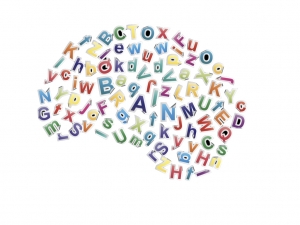 Thinking Outside the Box About Letters and the Sounds They Make
Thinking Outside the Box About Letters and the Sounds They Make
You can’t think outside the box if you don’t know what’s in it!
Secret Stories® ensures that all learners, regardless of age, own everything that’s “in the box” when it comes to letters and the sounds they can make—so as to prepare them for the incredibly difficult task of accessing higher level text.
Its brain based and accelerated approach to traditional phonics skill mastery makes Secret Stories® one of the most highly effective, reading intervention tools available for struggling, upper-grade readers, who simply have no time to waste.
By shifting instructional emphasis from skill practice to skill understanding, Secret Stories® shortens the traditional learning curve for phonics mastery— eliminating time-consuming sight word practice, memorization of phonics rules, and always having to tell students, “It just is…It just does…You’ll just have to remember…” whenever they can’t sound out or spell a word.
Secret Stories® makes use of already existing, learner frameworks of social and emotional experience and understanding, creating a familiar thinking-construct in which kids can easily identify the most likely sounds of letters, even in unfamiliar text.

Kids who know the Secrets understand that friendships between letters can change how they behave when they get together in words.
For example, the vowels behave differently when they’re hanging out on their own, versus when Mommy E® or the Babysitter Vowels® are nearby. Kids as young as pre-K and kindergarten can understand that Mommy and the Babysitters are the “triggers” for determining whether or a vowel will be “short and lazy” or use its superpowers to say its name—even in long, multisyllabic words!
Regardless of text level, there’s virtually no word that kids can’t crack when they know the Secrets. Aligning complex phonics skills to familiar concepts that learners already understand enables struggling readers to quickly gain power over text. Within this familiar context, inexperienced readers can predict the most and next most likely sound behaviors of letters in text as easily as they would the most likely behaviors of their own friends and classmates.

Learning to Read vs. Reading to Learn
While reading at the beginning K-2 grade levels focuses mainly on decoding, the instructional momentum shifts to comprehension at the intermediate grade levels and beyond. Ideally, students will have crossed over the instructional hump by third grade, having “learned to read” so that they can “read to learn.” Ideally, students should always be learning to read and reading to learn if they are to develop adequate content and language knowledge to read proficiently.
Struggling readers, however, can have a difficult time making this transition, often expending too much effort on decoding the text, with little left over to actually digest it. This division of mental processing power can often give the appearance of difficulty with comprehension, whereas it can more likely be attributed to the lack of automaticity with text. Only when readers are able to decode text with little to no conscious processing does the brain have enough space and energy to fully attend to the higher-level process of comprehension (i.e. drawing inferences, making predictions, pulling information from text, etc.).
Secret Stories® Phonics Works with the Brain
Research validates the need for continued phonics instruction for struggling students into the higher grade levels, especially for ensuring encoding (writing) fluency.
“Children who can’t read much by age nine are in serious trouble. By then, teachers expect them to have finished learning to read and to start seriously reading to learn.” —Pamela Snow
Understanding written text is the product of decoding and listening comprehension. Decoding refers to the ability to convert print into sound and to read fluently. When decoding skills are poor, they will place important constraints on reading comprehension (Gough & Tunmer, 1986).
Given the time, energy and resources that are spent working with struggling, upper-grade readers on comprehension, it is important to know that these efforts often treat only the symptom and not the root cause, which is most often a lack of automaticity with text.
Secret Stories® activates every learning channel through multi-sensory instruction, strengthening learners’ ability to receive, store and retrieve information. By introducing information to the brain from as many angles as possible, more neural connections are created and strengthened. As a result, student learning is more holistic and multidimensional.
Many students have difficulty with one domain, but do better with another. By employing a variety of instructional strategies that engage multiple modalities and pathways for learning, information is more likely to be stored in the different learning networks, providing learners with more avenues for both retention and retrieval.
Stories Activate Every Learning Channel and Act as Strong Memory-Holding Templates in the Brain
“When the new information is presented in a familiar story form, the memory structure facilitates the brain’s retention of that information.” —Dr. Judy Willis
 Secret Stories® establish supportive conditions in the brain for learning and remembering, acting as “memory enhancers,” providing a sort of mental map upon which new information is more easily laid.
Secret Stories® establish supportive conditions in the brain for learning and remembering, acting as “memory enhancers,” providing a sort of mental map upon which new information is more easily laid.
By presenting phonics concepts in a story-based format, Secret Stories® receive a higher level of priority in the brain, using an emotional hook to engage curiosity and increase levels of learner engagement. Secret Stories® puts the whole brain to work, activating multiple areas of the brain, simultaneously. Research shows that the more widespread the connections, the deeper the learning.
Secret Stories® activates the social and emotional centers of the brain that aid memory, and unlike direct instruction, skill content delivered through storytelling promotes the formation of multilayered memories that result in deeper learning experiences and easier skill retrieval. Additionally, the brain becomes more active when telling or listening to a story, prompting higher levels of learner engagement.
“The benefits of embedding abstract skill content into stories is a great pedagogical strategy because it increases learner-curiosity and the thought processes that support it. If a student is not interested in a topic, they probably don’t have enough knowledge or experience in that area to develop the sense of curiosity.” —Dr. Mary Helen Immordino-Yang
It is neurobiologically impossible to think deeply about things you don’t care about (Immordino-Yang, 2016). For those working with struggling readers at the upper grade levels, it can be difficult to foster learner curiosity about letter sounds and phonics patterns. This is why the social-emotional “affective” learning domain is the ideal doorway through which to channel these critical skills.
Struggling Readers and Reading Intervention
Students who can’t read fluently can stumble for years because school is built on the idea that after third grade, everyone can read; the work shifts from learning to read to reading to learn. To access complex text, students must possess both the “code-based” skills to read it and the “meaning-based” skills to understand it. Struggling readers who expend too much energy on decoding the text have little left over to actually digest it. Students who cannot read well fall further behind on all subjects— science, history, and even math.
Used as a reading intervention, Secret Stories® targets already primed, social and emotional learning systems to accelerate mastery of the critical “code-based” phonics skills needed to read and write, without impeding the momentum of on-grade level instruction. By aligning phonics instruction with familiar frameworks of learner experience and understanding, Secret Stories® sparks genuine interest and increases the level of learner engagement. In this optimal learning state, students can begin to drive their own learning and instruction, which is the evolutionary ideal (Immordino-Yang, 2016).

Secret Stories® transforms phonics skills kids have to learn into “secrets” they want to know, making them important and something that kids care about.
“My students were almost frenzied in their demands to hear more and more of these secret explanations for words and sounds that had never made sense to them before, and these are the kids who act like they couldn’t care less 99% of the time! Just watching their faces light up as everything started to come together for them was incredible. What a FIND the Secret Stories are—if only I’d had them years ago! Every child deserves to know the Secrets!”
—Edie, Fourth/Fifth Grade SLD & Intervention Teacher


 Thinking Outside the Box About Letters and the Sounds They Make
Thinking Outside the Box About Letters and the Sounds They Make


 Secret Stories® establish supportive conditions in the brain for learning and remembering, acting as “memory enhancers,” providing a sort of mental map upon which new information is more easily laid.
Secret Stories® establish supportive conditions in the brain for learning and remembering, acting as “memory enhancers,” providing a sort of mental map upon which new information is more easily laid.

